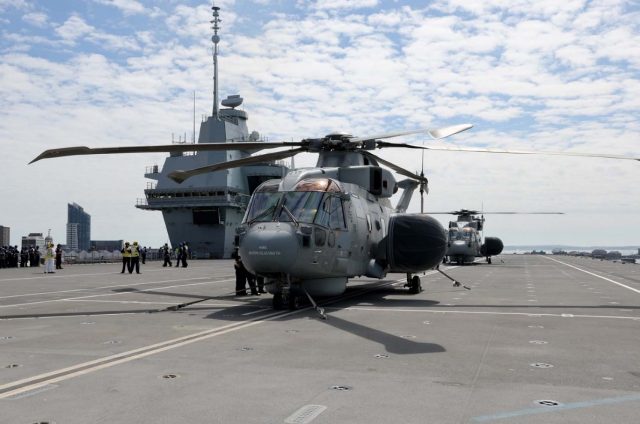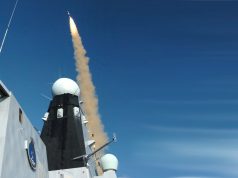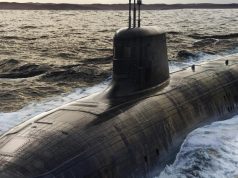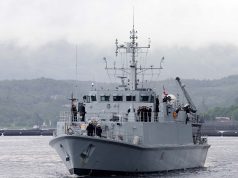Despite having just recently declared the Crowsnest airborne early warning radar system operational, the Royal Navy plans to retire the system before the end of the decade.
According to a release from the UK Defence and Security Accelerator (DASA), the search is already on for a system that would replace Crowsnest, which consists of a Thales Searchwater radar and a Cerberus mission system carried by a Merlin Mk2 helicopter.
DASA is hosting a £1.25 million “Maritime Early Warning Innovations competition” to identify solutions that can improve situational awareness for Royal Navy carrier and littoral strike groups.
Current early warning maritime capabilities are delivered by sensors mounted aboard airborne platforms. According to the release, DASA expects that a follow-on for Crowsnest could be a singular large radar sensor mounted on an unmanned air platform.
The agency noted that alternatives to unmanned systems are also welcome.
The first priority is to find a potential successor to Crowsnest, which has a planned out-of-service date of 2029. This means that the Crowsnest, which had been plagued by delays and cost overruns until it entered service in March this year, will have spent only nine years in service.
Crowsnest was delivered ahead of the first operational deployment of HMS Queen Elizabeth, despite previous fears that the system would not be ready in time.
The distinctive-looking helicopter, with a large radar dome or ‘bag’ sticking out from the fuselage giving it the nickname ‘bagger’, will provide airborne surveillance and the control of other aircraft (known as ASaC) in the carrier’s strike group.
The Merlins carrying the Crowsnest have a crew of three: two observers (mission and tactical specialists) and one pilot. High above the fleet with their sensors, they enable the carrier strike group commander to see, understand and react well beyond the horizon for any air or surface threats. They can also act as a control center for strike operations between the carrier and the ship’s F-35B fighters.
The requirements outlined by DASA for the Crowsnest successor call for a system that would improve threat detection and situational awareness, including detecting, tracking, recognizing and identifying hostile and non-hostile contacts, on the surface of the water and in the air. It should also enhance information processing and dissemination, including integrating the data from sensors and other air and surface platforms within the maritime task group into a composite picture of activity to enable timely decision making. Other qualities include an optimized efficiency through a reduced operator and support burden, as well as novel or innovative methods of combining system functionality.



























